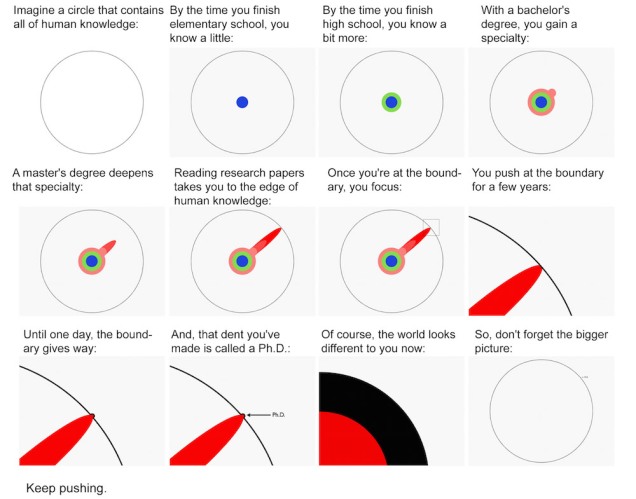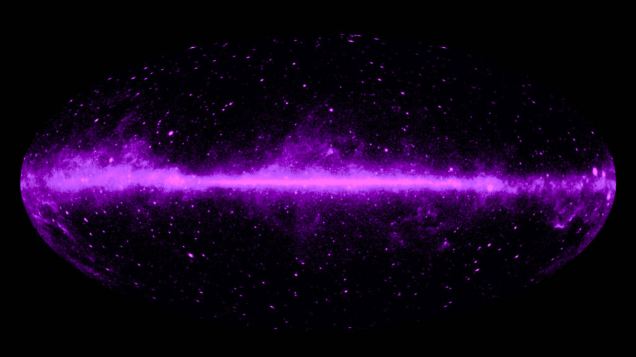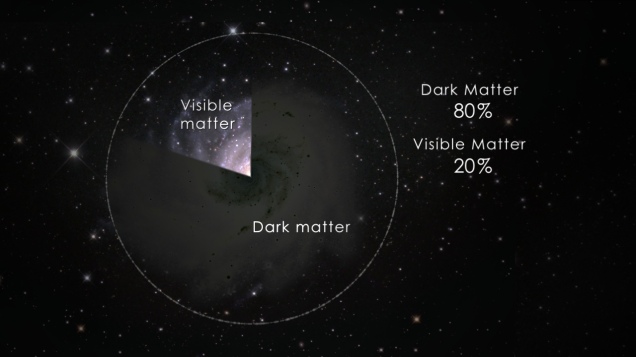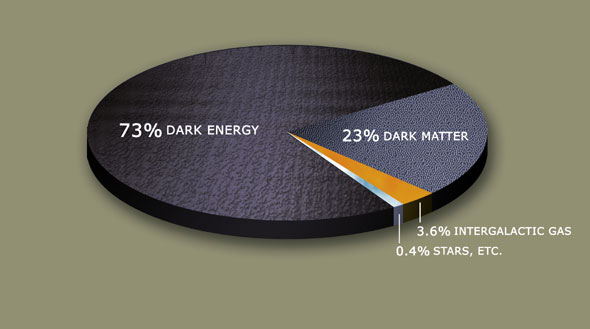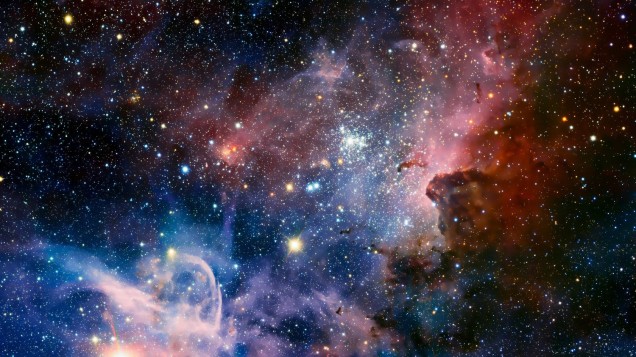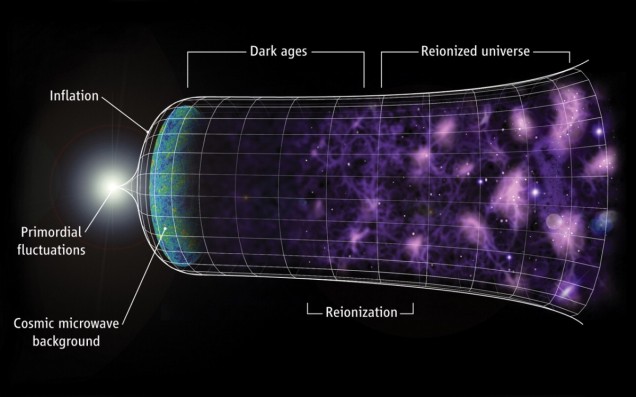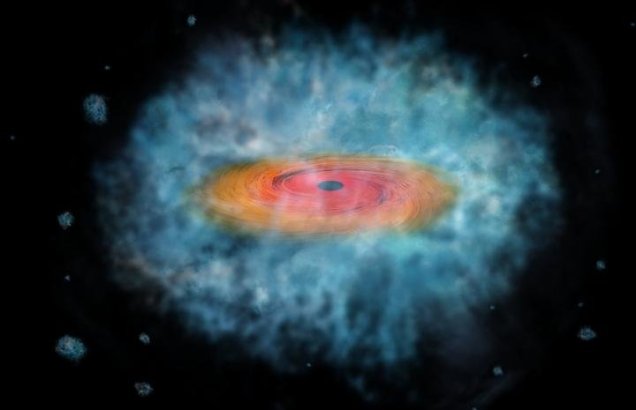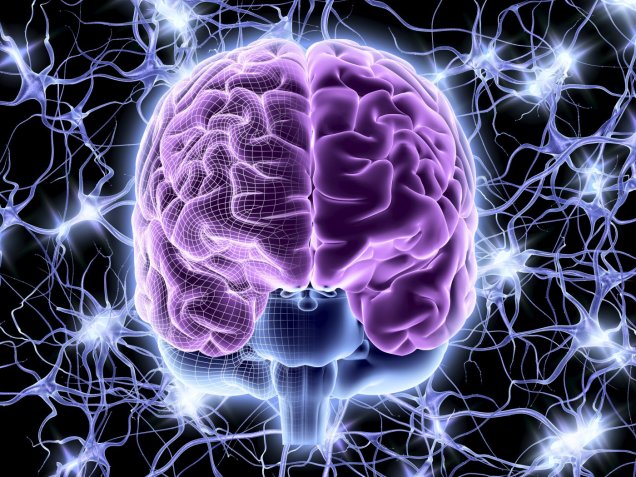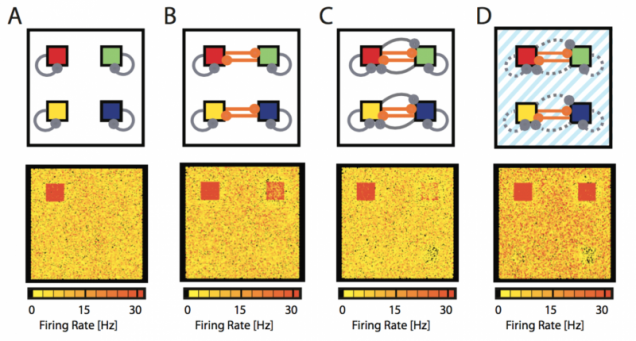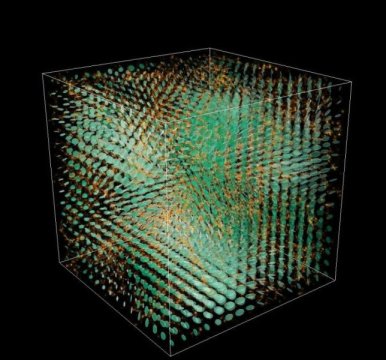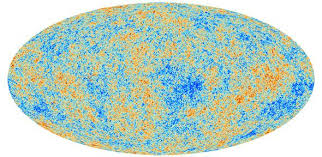Well having a doctoral degree in one’s illustrious resume is definitely one of the most reputable and gratifying thing a person can achieve in his/her life. After years of hard work research, a ‘doctor’ in front of your name is undeniably justifiable. In any culture doctorates are regarded as conversant individuals. With candid curiosity and a constant driving dynamism, a doctorate person throughout his life strives to learn novel concepts, understand complex problems relevant to his field and most significantly loves to solve them. But does it mean that he/sshe know it all? Apparently the answer to that question depends on the perception of how you see the whole notion of having a PhD.
When an abstract thought of pursuing a doctoral degree hits a person’s conscience, it might make him a little bit anxious. To lighten this perception of newbies towards PhD., Matthew Might, a computer science professor at the University of Utah found a vivid explanation. He writes, ‘Every fall, I explain to a fresh batch of PhD. students what a PhD. is. It’s hard to describe it in words. So, I use pictures.’ In his Illustrated Guide to the PhD, Professor Might crafted a pictorial description that puts the intimidating degree into a viewpoint. Anyone who has already pursued a PhD will see the astuteness in it. And young, ambitious researchers would be intelligent to pay it some heed.
Well, have a look at the pictorial representation given below:-
Imagine a circle that contains all of human knowledge:

By the time you finish elementary school, you know a little:
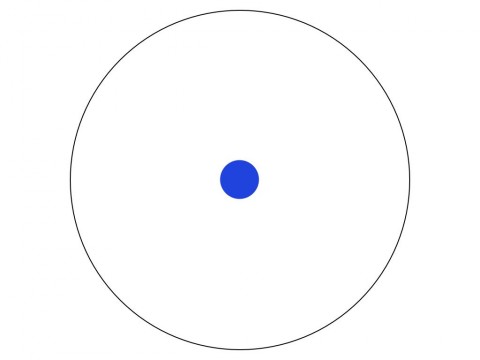
By the time you finish high school, you know a bit more:

With a bachelor’s degree, you gain a specialty:
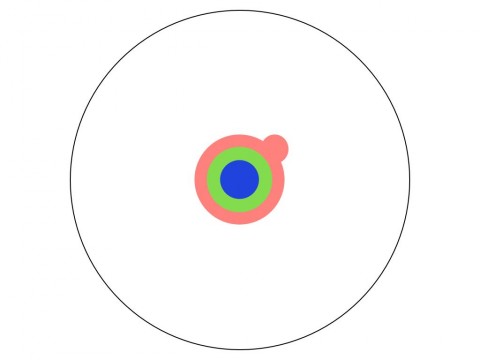
A master’s degree deepens that specialty:

Reading research papers takes you to the edge of human knowledge:
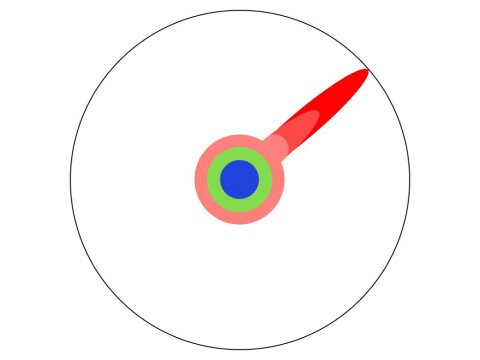
Once you’re at the boundary, you focus:
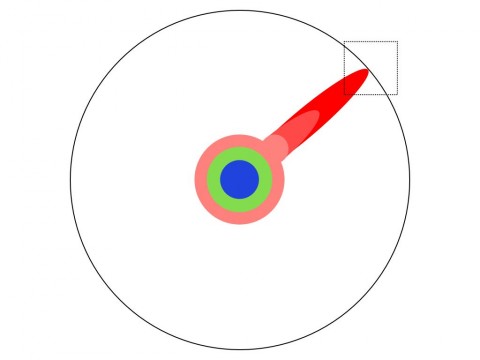
You push at the boundary for a few years:

Until one day, the boundary gives way:

And, that dent you’ve made is called a Ph.D.
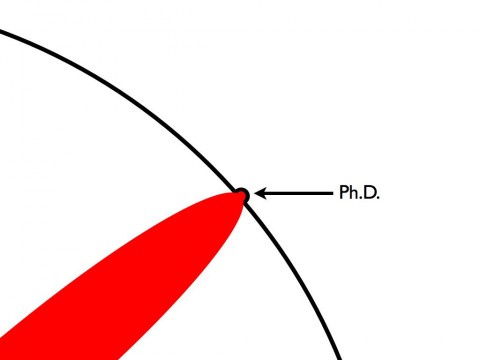
Of course, the world looks different to you now:

So, don’t forget the bigger picture:

So looking at the bigger picture we should always keep pushing and be humble while doing it.
Below given is a summarized version.
